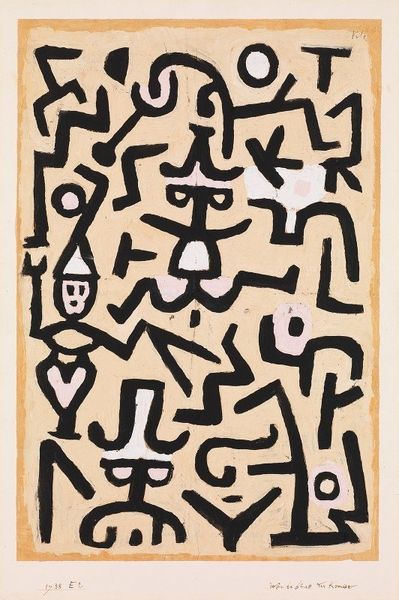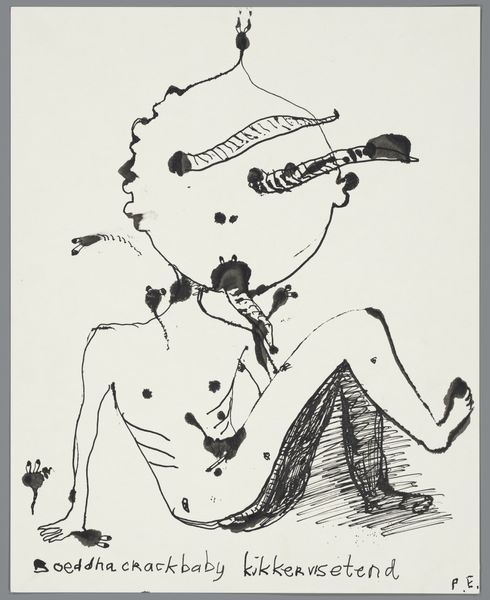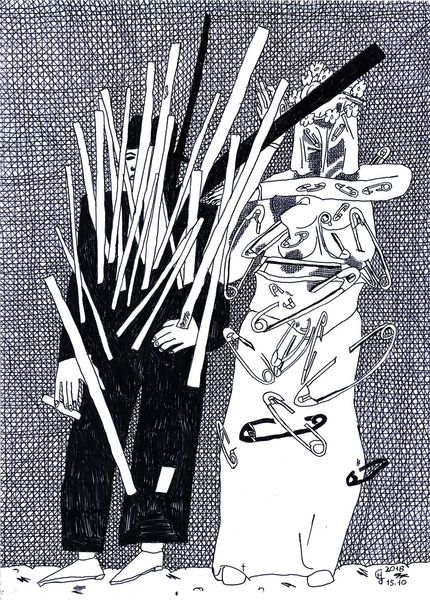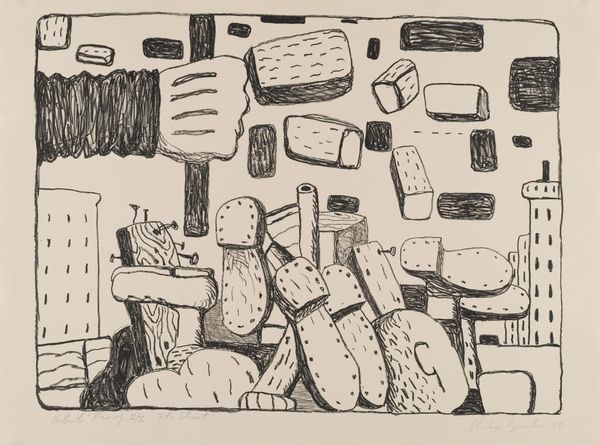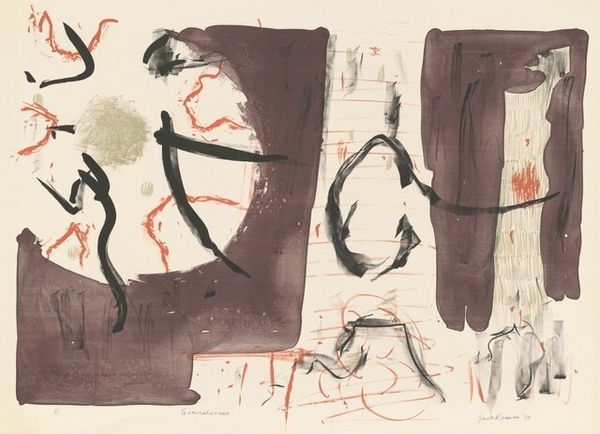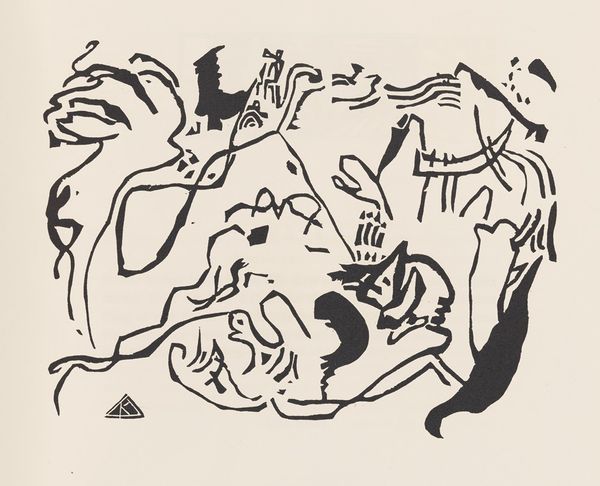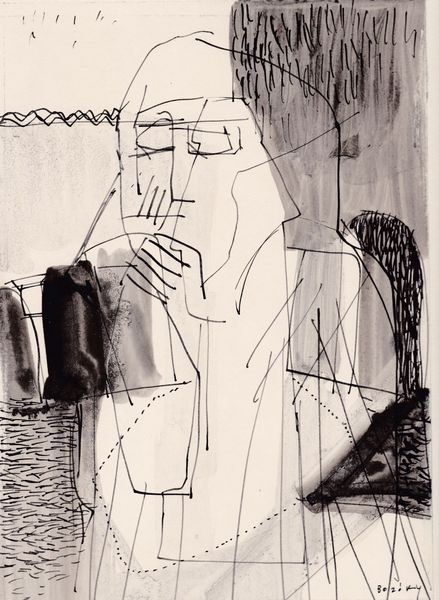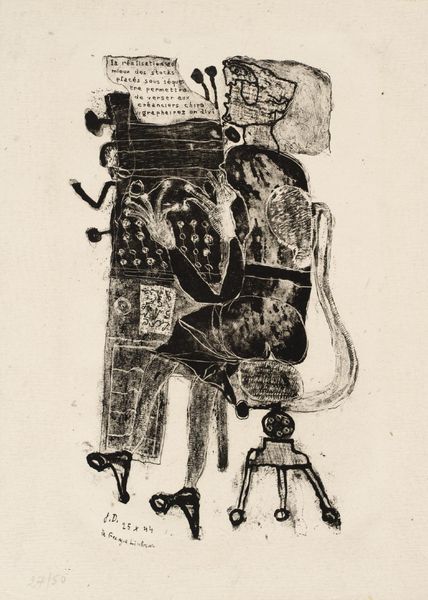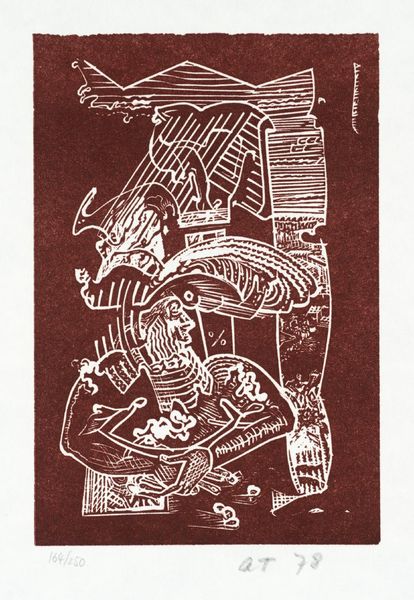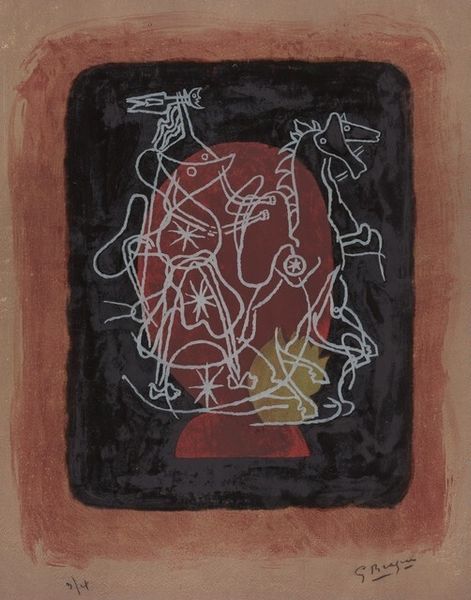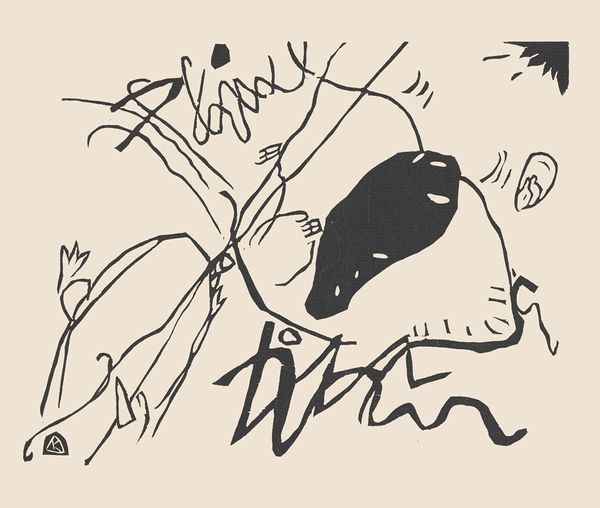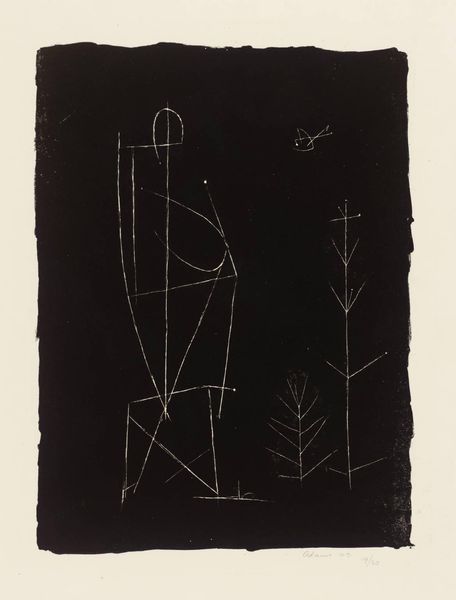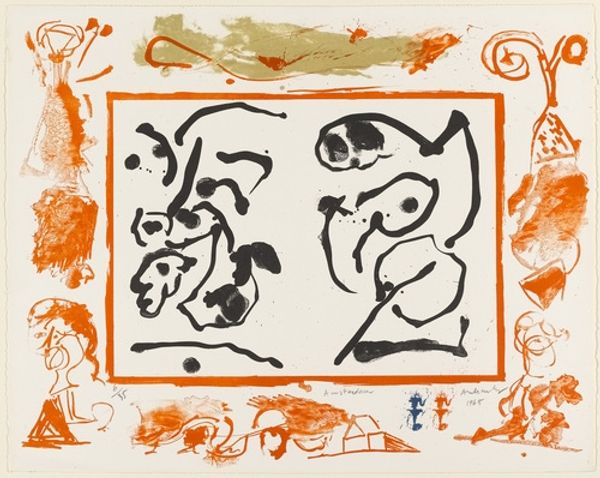
graphic-art, print, linocut
#
portrait
#
graphic-art
# print
#
linocut
#
figuration
Copyright: Vytautas Kasiulis,Fair Use
Curator: Here we have Vytautas Kasiulis's "Linocut" from 1950, a graphic artwork currently residing at the Lithuanian Art Museum in Vilnius. It's a striking piece done, naturally, in the linocut technique. What's your first take on this work? Editor: Stark. It has this real, powerful graphic punch from the bold blacks against the pale ground. There is such a simple clarity and it communicates volumes even in its reductive form. I feel almost…a challenge looking at it. Curator: I see what you mean. Its deliberate use of negative space pushes the viewer to actively engage, filling in the implied forms and details. Consider Kasiulis's place in the mid-20th century; he left Lithuania in 1944, becoming part of the wave of displaced artists grappling with identity and belonging. This self-portrait could represent that feeling of being both present and absent, fragmented yet defined. Editor: Absolutely, you can’t separate the art from the sociopolitical context. The figure, presumably Kasiulis, surrounded by what appears to be the tools and products of artistic labor-- easel, paintings, a palette, brush pot. Does the linocut as a medium factor into this in some way? Curator: A crucial point. Linocut, due to its accessibility and graphic nature, served various sociopolitical functions in that period, being a medium that could be easily distributed for agitational purposes or artistic self-expression. Here, Kasiulis possibly uses it to represent an artistic identity crafted within the context of exile, reduced to these hard, irreducible shapes. Editor: The black and white is telling, isn't it? As if suggesting the black-and-white certainties the political climate seems to demand. Curator: Indeed. And although the palette of an artist usually carries myriad colors, he renders it only through its dark imprint. This piece becomes, therefore, a symbol of how artists construct themselves amid external pressure and the creative decisions which have bearing in art history itself. Editor: It does seem to invite you into Kasiulis' internal world, prompting introspection about the role of the artist and what creative resistance means when facing censorship. I leave thinking about resilience, resistance, and the many layers of an immigrant story rendered in this incredibly visually economical fashion. Curator: And for me, it highlights how art functions as witness, reflecting societal tensions and individual struggles for identity against simplification of complex individual positions. It’s a strong work to remind ourselves about power.
Comments
No comments
Be the first to comment and join the conversation on the ultimate creative platform.
